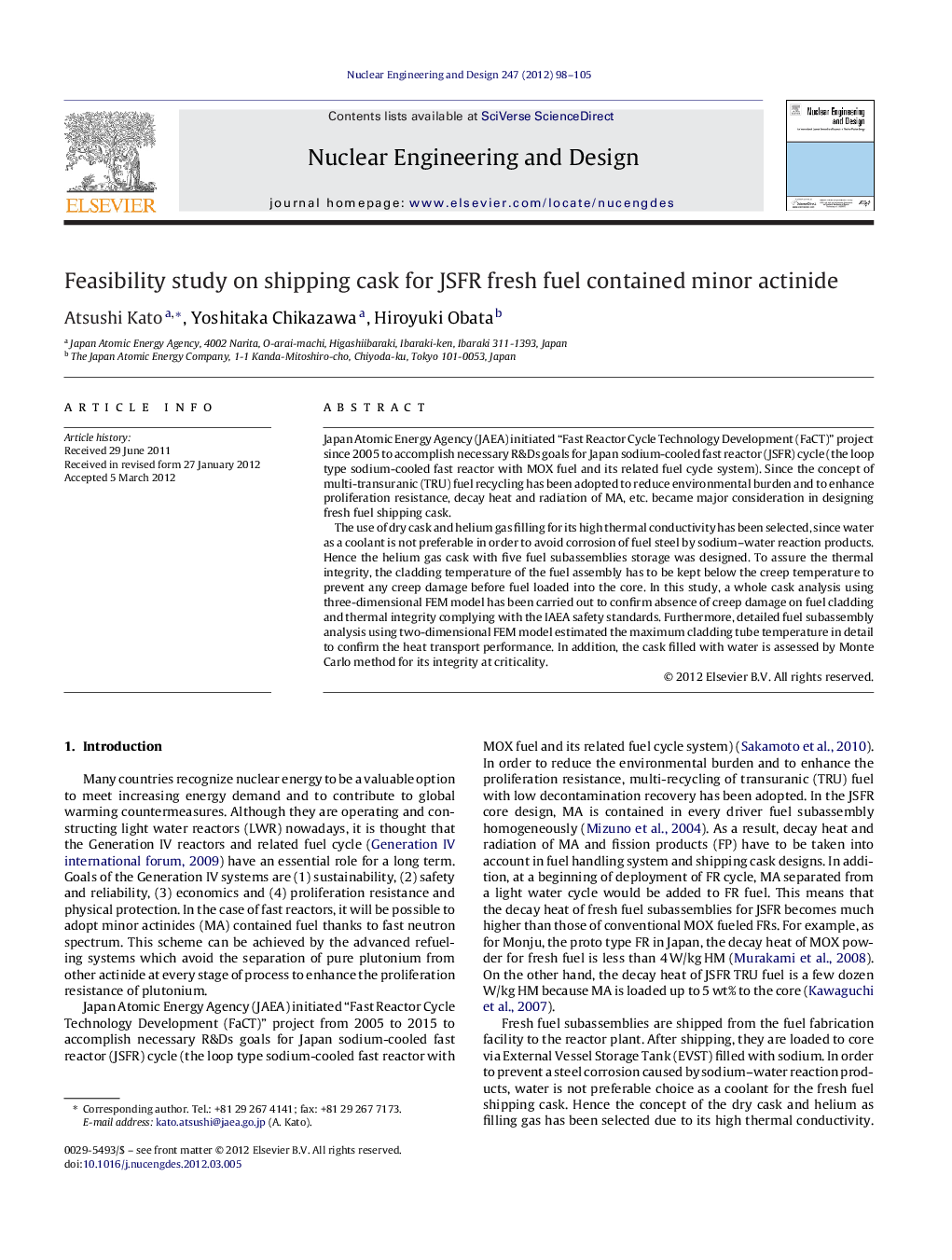| کد مقاله | کد نشریه | سال انتشار | مقاله انگلیسی | نسخه تمام متن |
|---|---|---|---|---|
| 297286 | 511753 | 2012 | 8 صفحه PDF | دانلود رایگان |

Japan Atomic Energy Agency (JAEA) initiated “Fast Reactor Cycle Technology Development (FaCT)” project since 2005 to accomplish necessary R&Ds goals for Japan sodium-cooled fast reactor (JSFR) cycle (the loop type sodium-cooled fast reactor with MOX fuel and its related fuel cycle system). Since the concept of multi-transuranic (TRU) fuel recycling has been adopted to reduce environmental burden and to enhance proliferation resistance, decay heat and radiation of MA, etc. became major consideration in designing fresh fuel shipping cask.The use of dry cask and helium gas filling for its high thermal conductivity has been selected, since water as a coolant is not preferable in order to avoid corrosion of fuel steel by sodium–water reaction products. Hence the helium gas cask with five fuel subassemblies storage was designed. To assure the thermal integrity, the cladding temperature of the fuel assembly has to be kept below the creep temperature to prevent any creep damage before fuel loaded into the core. In this study, a whole cask analysis using three-dimensional FEM model has been carried out to confirm absence of creep damage on fuel cladding and thermal integrity complying with the IAEA safety standards. Furthermore, detailed fuel subassembly analysis using two-dimensional FEM model estimated the maximum cladding tube temperature in detail to confirm the heat transport performance. In addition, the cask filled with water is assessed by Monte Carlo method for its integrity at criticality.
► The shipping cask for fresh fuel of FR which includes minor actinide is designed.
► Thermal and criticality integrity was confirmed by FEM and Monte Carlo analysis.
► The cask would contain the fuel with 3.0 kW decay heat per an assembly of maximum.
► The cask could be used even in the transition period from LWR to FR.
Journal: Nuclear Engineering and Design - Volume 247, June 2012, Pages 98–105